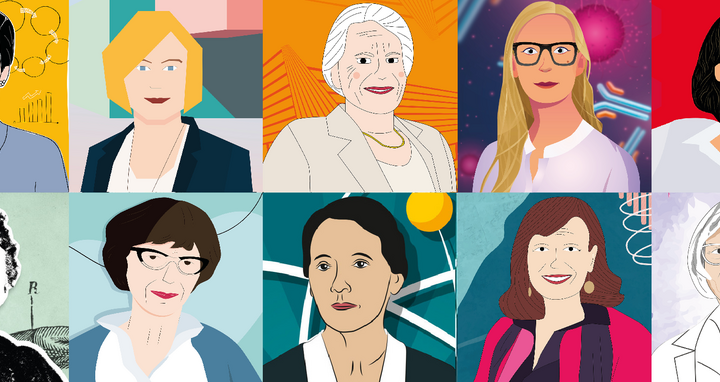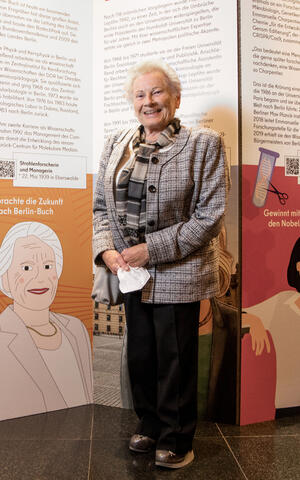Exhibition honors female pioneers
The exhibition “Berlin – Hauptstadt der Wissenschaftlerinnen” (Berlin - Capital of Female Scientists) presents a total of 22 extraordinary female researchers who have shaped Berlin as a city and science location and continue to do so today. They are pioneers in their fields and trailblazers for future generations of women scientists: from Agnes Harnack, who in 1908 was allowed to officially enroll as the city's first female student, to Marlis Dürkop-Leptihn, who after 118 male predecessors was elected the first female president of Berlin's Humboldt University in 1992, to Emmanuelle Charpentier, the 2020 Nobel Prize Winner in Chemistry.
Anyone can access short CVs of these women in German and English in the media library of the BIH website. Employees of the Max Delbrück Center for Molecular Medicine (MDC) as well as visitors to the “Gläsernes Labor” also have the chance to view the exhibition on site in the foyer of MDC.C from January 24 to March 9, 2022. Unfortunately, due to the current Omicron crisis, additional visits by the public are not possible.
“The world of science is yours”
The exhibition is an initiative of the former Berlin Mayor, Michael Müller, and Berlin Institute of Health at Charité (BIH). In order to give female scientists more visibility in the public perception, BIH experts, together with committed citizens, have created new Wikipedia entries for female university lecturers, professors and researchers in Berlin or revised existing entries in so-called edit-a-thons.
At the opening at the Rotes Rathaus on October 19th 2021, Michael Müller explained: “Over the decades, many great female scientists have made Berlin the leading metropolis of innovation that it is today. But we don't just want to inform, we especially want to inspire the next generations and call out to every schoolgirl and young woman: The world of science is yours!” Two academics who worked at the Berlin-Buch campus are honored on the exhibition's panels: Dr. Cécile Vogt and Dr. Gudrun Erzgräber.
Dr. Cécile Vogt and Dr. Gudrun Erzgräber
Cécile Vogt (1875-1962) was a neurologist with a doctorate and, together with her husband Oskar Vogt, is considered one of the founders of modern neuroscience. She did outstanding work at the Kaiser Wilhelm Institute for Brain Research, which opened a modern research building in Buch in 1929. Her groundbreaking work contributed to the understanding of brain structure, and she also researched diseases of the nervous system. According to the Nobel Foundation, Vogt was the first woman to be nominated for a Nobel Prize in medicine or physiology, a total of 13 times between 1922 and 1953. In 1932, the German Academy of Sciences Leopoldina admitted her as a member along with Oskar Vogt, a high honor in Germany.
Gudrun Erzgräber in front of her portrait in the exhibition "Berlin - Capital of Female Scientists"
Gudrun Erzgräber (*1939) is a nuclear physicist. She did her doctorate at the Central Institute for Molecular Biology of the Academy of Sciences of the GDR in Berlin-Buch, lived and worked for several years in the Soviet Union. In the mid-1980s, she returned to Berlin-Buch and began a career as a science manager, starting 1992 also at the Berlin-Buch Campus She was instrumental in developing the Max Delbrück Center for Molecular Medicine (MDC) and raised 66 million Euros in funding from the federal government, Berlin, and the EU for the development of Buch as a science and technology location. With great commitment, she built the Biotechnology Park in Buch, an innovation and start-up centre. Under her leadership, the Life Science Learning Lab (Gläserenes Labor) was also established. Gudrun Erzgräber was honored for her outstanding achievements by the Berlin authorities and the Federal Republic of Germany with an Order of Merit. She welcomes the exhibition: “I think this is also a small contribution towards women going into science, into leadership positions, into executive boards, into supervisory boards.”
Text: Christine Minkewitz





